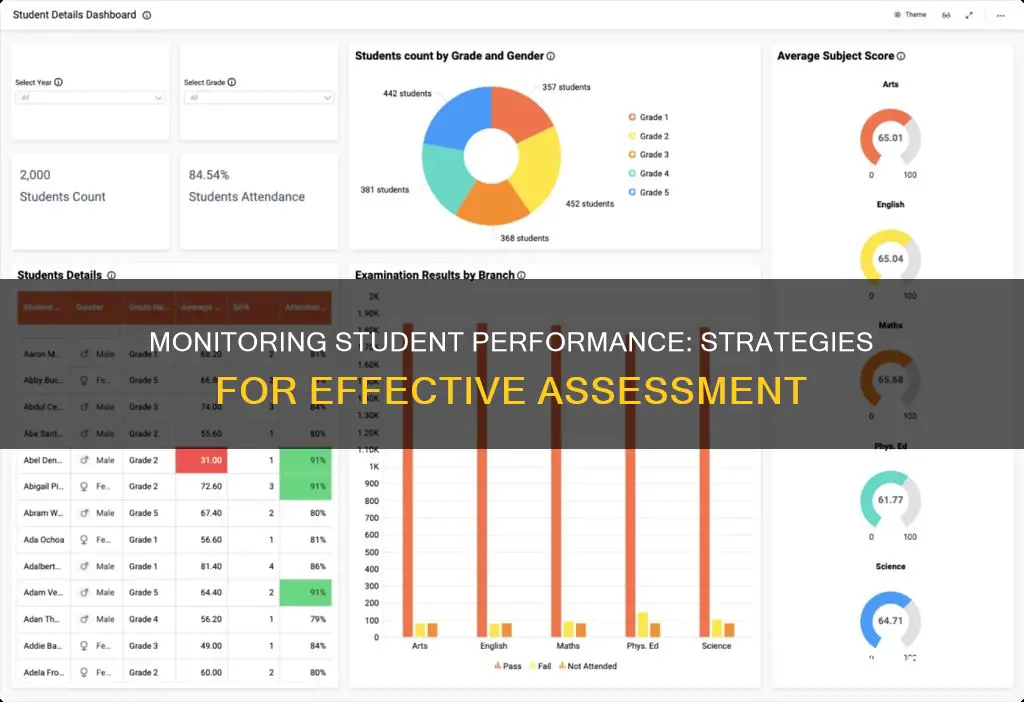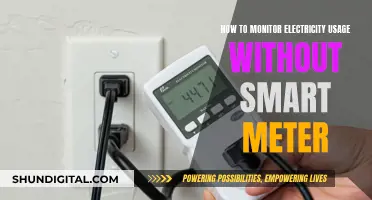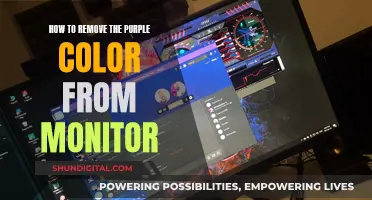
Monitoring student performance is an important part of education. It helps teachers, parents, and school management understand the challenges students face with different subjects and topics. In modern schools, student academic management system software is used to monitor student progress efficiently. There are several ways to monitor student performance, including curriculum-based monitoring, frequent learning, observation and interaction, formative assessments, automated progress detection, and quizzes and presentations. These methods help teachers evaluate their teaching methods and make necessary adjustments to improve student learning outcomes. Additionally, various tools are available, such as Google Classroom, ClassDojo, and TeacherKit, which facilitate tracking student performance and behaviour.
| Characteristics | Values |
|---|---|
| Determine students' current skill levels | Verbal assessments, observations and/or conversations with the child's parent or guardian |
| Set clear, definable learning goals | Specific, measurable, attainable, relevant and time-based |
| Observe students and gather evidence | Watch them during free play, give them short check-in assessments or take photos of them as they complete given activities in the classroom |
| Compare data against learning standards and benchmarks | State-, school- or curriculum-defined benchmarks and standards |
| Communicate progress with parents | Regular parent-teacher conferences, drop-off/pick-up or use a communications platform |
| Curriculum-based monitoring | Standardised tests that include all the material presented over the duration of the year |
| Frequent learning | Classroom response, student-teacher interaction, written test, oral test, and writing |
| Observation and interaction | "Alone teacher time" |
| Formative assessments | Exit tickets |
| Automated progress detection | School management system software |
| Quiz and presentations |
What You'll Learn

Curriculum-based monitoring tests
The tests are not meant to be studied for, but rather to give teachers an understanding of how well their teaching methods are working and whether adjustments are needed. They include all the learning material from the year, but the questions appear in different forms. This way, teachers can identify if students are retaining information and mastering skills over time.
By administering these tests regularly, teachers can track student progress and make data-based instructional decisions. The data collected can be used to identify students who may need additional support or alternative instruction. It can also help teachers reflect on their teaching methods and make any necessary changes to improve student learning.
Studio Monitor Blown: How to Spot the Signs
You may want to see also

Collecting data and samples of work
Collecting student data and samples of work is an essential part of monitoring student performance. It provides teachers with valuable insights into student progress and achievements, and helps identify areas where students may need additional support or challenges. Here are some ways to effectively collect student data and samples of work:
Formal and Informal Assessments
Regular formal and informal assessments are a great way to gather data on student performance. This includes quizzes, tests, exams, and assignments. Formative assessments, such as classroom discussions, student conferences, and concept maps, provide ongoing information about student comprehension and allow teachers to make immediate corrections to their understanding. Summative assessments, such as state assessments, unit tests, and final projects, provide data on student mastery of content but may not always inform instruction as they are often received too late.
Student Interest Surveys
Student interest surveys, completed at the beginning of the school year, give teachers valuable insights into their students' interests, hobbies, and personalities. This information can be used to build relationships with students and plan engaging lessons that cater to their interests. However, it's important to note that interests can change, so teachers should not treat these interests as set in stone.
Attendance and Discipline Data
Attendance data can help teachers understand the reasons behind a student's difficulty in mastering certain skills. By keeping track of the days a student is absent, teachers can plan individual teaching opportunities or assign students to appropriate small groups to catch up on missed work. Discipline data also provides valuable insights into student behaviour. Paying attention to when and why a student is removed from the classroom for disciplinary reasons allows teachers to prepare instruction for their return and identify any patterns or antecedents to their behaviour.
Student Work Samples
Collecting samples of student work, such as pre and post-learning tests, assignments, and projects, allows teachers to analyze a student's current performance and evaluate their growth throughout the school year. These samples can be stored in a binder or folder for quick reference and can be used to provide students with feedback on their progress, fostering greater personal responsibility for their learning.
Behavioural Observations
Behavioural observations are another important source of data. Informal means, such as quizzes, games, and formative tests, can help teachers assess a student's performance, strengths, weaknesses, and progress. Additionally, information about a student's background can help diagnose possible causes of poor performance and inform remedial actions.
Monitoring RSpec Performance: Strategies for Success
You may want to see also

Frequent evaluations
Regular and frequent evaluations are an effective way to monitor student progress in the classroom. They help students view themselves as learners and understand where they stand. They also highlight areas where students are at risk and help teachers understand where their students are lacking.
There are several methods that can be used to evaluate student performance. One such method is rubrics, which are an objective set of guidelines that define the criteria used to score or grade an assignment. Teachers can give students the rubric in advance to help them understand the requirements and expectations for the assignment. Portfolios are another method, which are a collection of a student's work over a period of time. This type of assessment allows teachers to evaluate a student's mastery of content more accurately than a single assessment.
When assigning grades, teachers should consider three factors: achievement, growth, and habits. Achievement refers to how the student is performing in relation to expected grade-level goals, growth refers to the amount of individual improvement over time, and habits include things like participation, behaviour, effort, and attendance. In a differentiated classroom, teachers grade these factors separately. They report grades based only on achievement and report information about growth and habits in other ways, such as through feedback or parent-teacher conferences.
Another important aspect of frequent evaluations is that they can positively impact how students see themselves as learners. When students are given multiple opportunities to demonstrate their understanding, they are less likely to be demotivated by a single bad grade. Frequent evaluations also allow teachers to pinpoint areas where students need more help or additional instruction to achieve success.
In addition to traditional assessments, teachers can also use ed-tech tools to measure student performance. For example, live widgets can track student learning progress in real time, offering insights into areas where students need extra challenges or support.
Monitoring Badges: Where to Buy Them
You may want to see also

Formative assessments
Examples of formative assessments include:
- In-class discussions
- Instructor-created exams
- Low-stakes group work
- 1-minute reflection writing assignments
- Homework assignments
- Drawing a concept map in class
- Submitting sentences identifying the main point of a lecture
- Research proposals for early feedback
Laurie's Ankle Monitor: A Mystery Explained
You may want to see also

Automated progress detection
There are various software tools available that can aid in automated progress detection. These tools can provide detailed reports and analytics on student performance, making it easier for teachers to identify areas where students are excelling or struggling. For example, Progress Learning is a software platform that offers progress monitoring tools, enabling teachers to track student progress in specific subjects and standards in real time. It also provides various reports, such as session activity reports, intervention reports, and assessment comparison reports, to help teachers gain deeper insights into student learning trends.
Another example is BookWidgets, which offers a wide range of interactive exercises and games that can be automatically graded, such as quizzes, crossword puzzles, and pair-matching games. Teachers can easily track student progress and provide personal feedback through the platform. BookWidgets also integrates with other learning management systems like Google Classroom, making it convenient for teachers to manage student data and track progress across multiple platforms.
In addition to these specialised software tools, there are also open-source software options that can be utilised to automate student progress monitoring. These options are particularly useful for educational institutions with limited resources or those located in developing countries. By automating the generation of student reports, these systems can significantly reduce the workload for teachers and provide efficient methods for tracking student performance.
Overall, automated progress detection offers a data-driven approach to monitoring student performance. By utilising technology, teachers can gain valuable insights into student learning trends, identify areas of improvement, and provide targeted interventions to support student growth and achievement.
Printing from Serial Monitor to LCD Made Easy
You may want to see also
Frequently asked questions
Monitoring student performance allows teachers to identify students who are at risk academically and adjust their teaching methods to better meet the needs of their students. It also helps teachers reflect on their own teaching and assess the impact of their instructional strategies.
Teachers can monitor student performance through curriculum-based monitoring, frequent learning, observation and interaction, formative assessments, automated progress detection, and quizzes and presentations.
Teachers can use tools such as Google Classroom, ClassDojo, TeacherKit, and Edmodo to monitor student performance. These tools allow teachers to track student behaviour, provide feedback, and communicate with students and parents.
It is important to establish clear and definable learning goals, observe students and gather evidence of their progress, and communicate their progress with parents regularly. Teachers should also compare student data against learning standards and benchmarks to ensure a holistic view of each child's development.







